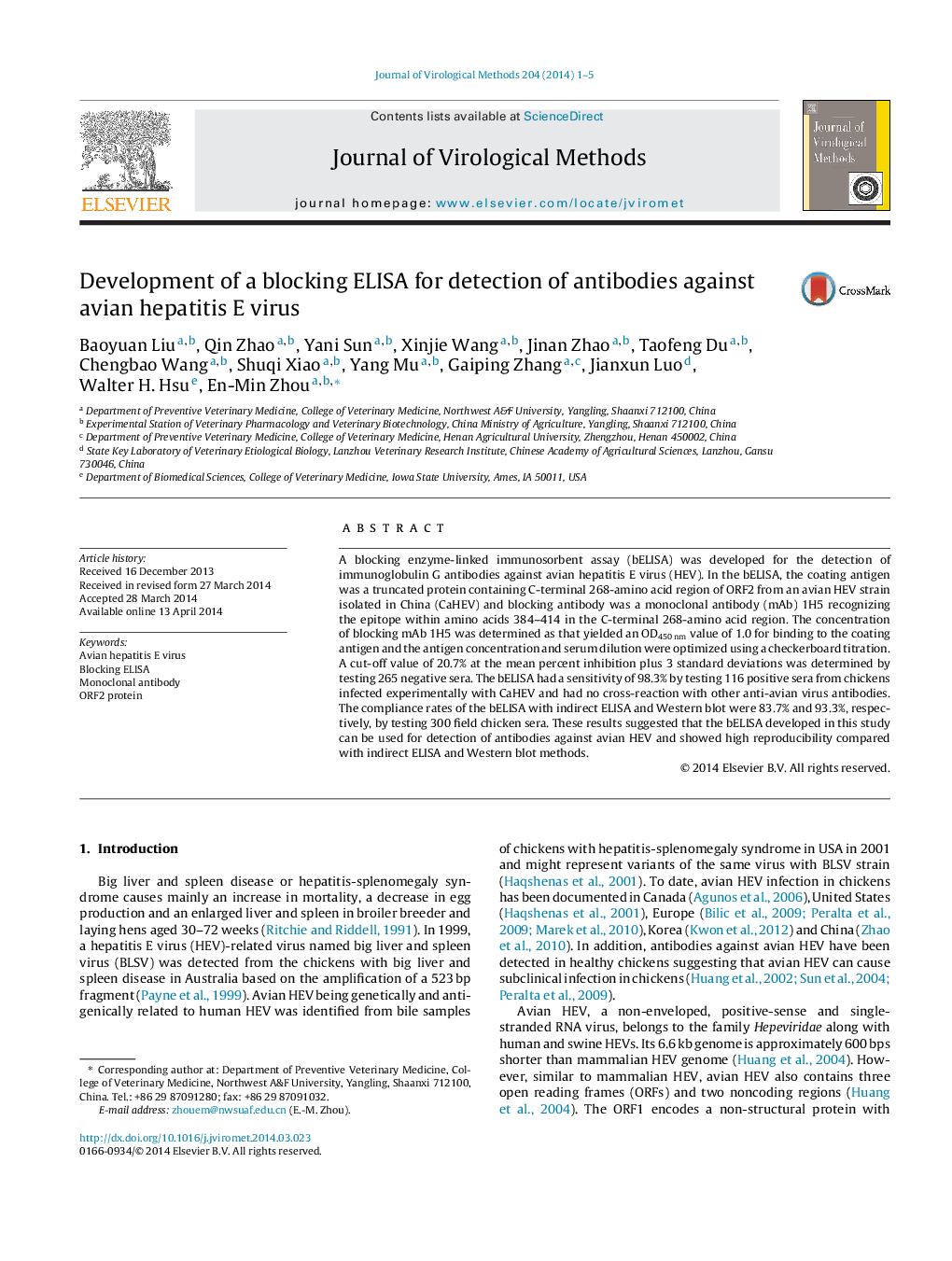| Article ID | Journal | Published Year | Pages | File Type |
|---|---|---|---|---|
| 6133643 | Journal of Virological Methods | 2014 | 5 Pages |
Abstract
A blocking enzyme-linked immunosorbent assay (bELISA) was developed for the detection of immunoglobulin G antibodies against avian hepatitis E virus (HEV). In the bELISA, the coating antigen was a truncated protein containing C-terminal 268-amino acid region of ORF2 from an avian HEV strain isolated in China (CaHEV) and blocking antibody was a monoclonal antibody (mAb) 1H5 recognizing the epitope within amino acids 384-414 in the C-terminal 268-amino acid region. The concentration of blocking mAb 1H5 was determined as that yielded an OD450Â nm value of 1.0 for binding to the coating antigen and the antigen concentration and serum dilution were optimized using a checkerboard titration. A cut-off value of 20.7% at the mean percent inhibition plus 3 standard deviations was determined by testing 265 negative sera. The bELISA had a sensitivity of 98.3% by testing 116 positive sera from chickens infected experimentally with CaHEV and had no cross-reaction with other anti-avian virus antibodies. The compliance rates of the bELISA with indirect ELISA and Western blot were 83.7% and 93.3%, respectively, by testing 300 field chicken sera. These results suggested that the bELISA developed in this study can be used for detection of antibodies against avian HEV and showed high reproducibility compared with indirect ELISA and Western blot methods.
Related Topics
Life Sciences
Immunology and Microbiology
Virology
Authors
Baoyuan Liu, Qin Zhao, Yani Sun, Xinjie Wang, Jinan Zhao, Taofeng Du, Chengbao Wang, Shuqi Xiao, Yang Mu, Gaiping Zhang, Jianxun Luo, Walter H. Hsu, En-Min Zhou,
